M. Li
Prepare Non-classical Collective Spin State by Reinforcement Learning
Jan 29, 2024Abstract:We propose a scheme leveraging reinforcement learning to engineer control fields for generating non-classical states. It is exemplified by the application to prepare spin squeezed state for an open collective spin model where a linear control term is designed to govern the dynamics. The reinforcement learning agent determines the temporal sequence of control pulses, commencing from coherent spin state in an environment characterized by dissipation and dephasing. When compared to constant control scenarios, this approach provides various control sequences maintaining collective spin squeezing and entanglement. It is observed that denser application of the control pulses enhances the performance of the outcomes. Furthermore, there is a minor enhancement in the performance by adding control actions. The proposed strategy demonstrates increased effectiveness for larger systems. And thermal excitations of the reservoir are detrimental to the control outcomes. It should be confirmed that this is an open-loop strategy by closed-loop simulation, circumventing collapse of quantum state induced by measurements. Thanks to the flexible replaceability of the optimization modules and the controlled system, this research paves the way for its application in manipulating other quantum systems.
Joint Waveform and Filter Designs for STAP-SLP-based MIMO-DFRC Systems
Jan 23, 2022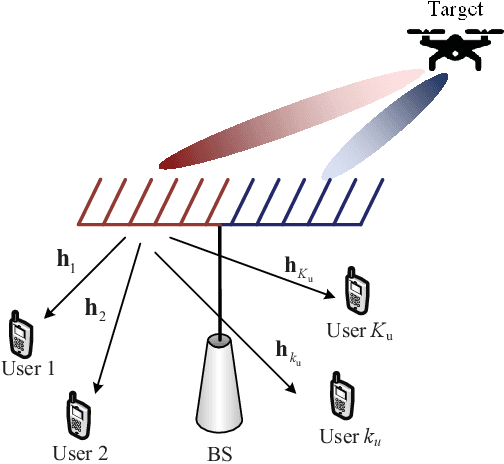
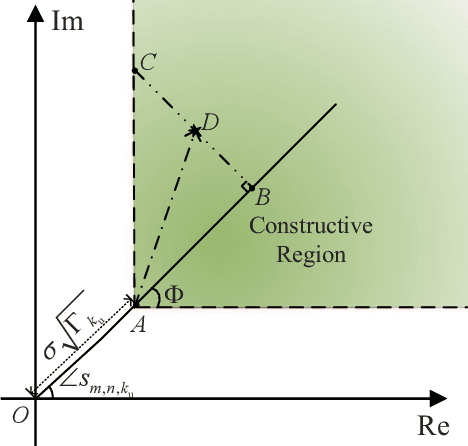
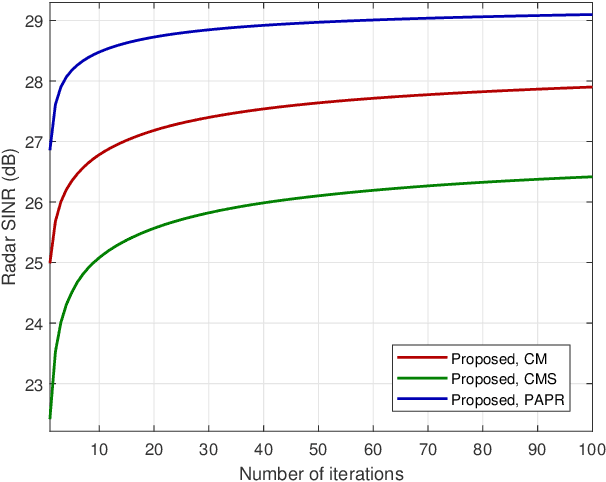
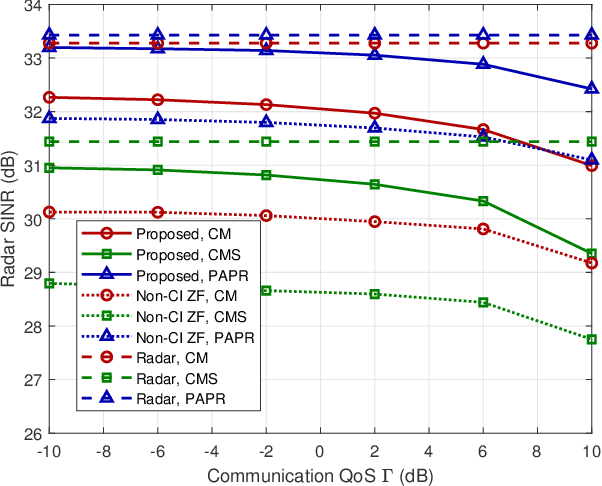
Abstract:Dual-function radar-communication (DFRC), which can simultaneously perform both radar and communication functionalities using the same hardware platform, spectral resource and transmit waveform, is a promising technique for realizing integrated sensing and communication (ISAC). Spacetime adaptive processing (STAP) in multi-antenna radar systems is the primary tool for detecting moving targets in the presence of strong clutter. The idea of joint spatial-temporal optimization in STAP-based radar systems is consistent with the concept of symbol-level precoding (SLP) for multi-input multi-output (MIMO) communications, which optimizes the transmit waveform for each of the transmitted symbols. In this paper, we combine STAP and SLP and propose a novel STAP-SLP-based DFRC system that enjoys the advantages of both techniques. The radar output signal-to-interference-plus-noise ratio (SINR) is maximized by jointly optimizing the transmit waveform and receive filter, while satisfying the communication quality-of-service (QoS) constraint and various waveform constraints including constant-modulus, similarity and peak-to-average power ratio (PAPR). An efficient algorithm framework based on majorization-minimization (MM) and nonlinear equality constrained alternative direction method of multipliers (neADMM) methods is proposed to solve these complicated non-convex optimization problems. Simulation results verify the effectiveness of the proposed STAP-SLP-based MIMO-DRFC scheme and the associate algorithms.
Joint Transmit Waveform and Passive Beamforming Design for RIS-Aided DFRC Systems
Dec 16, 2021
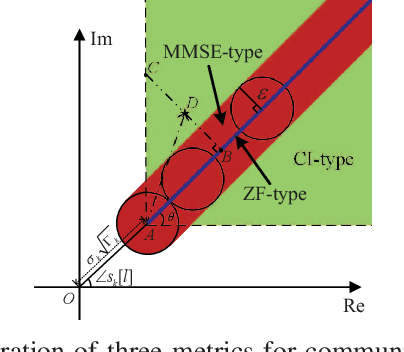
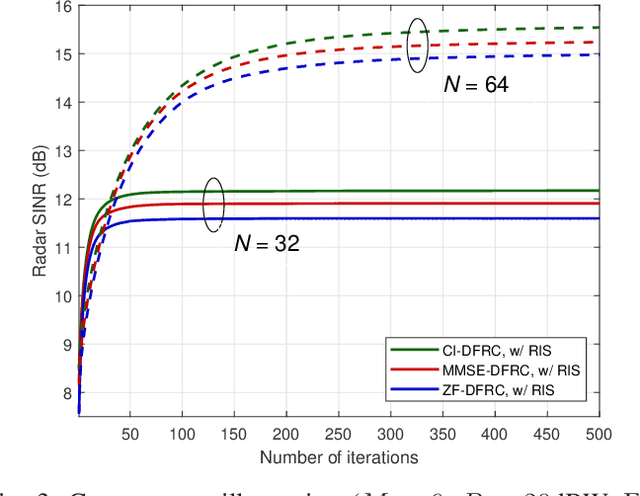
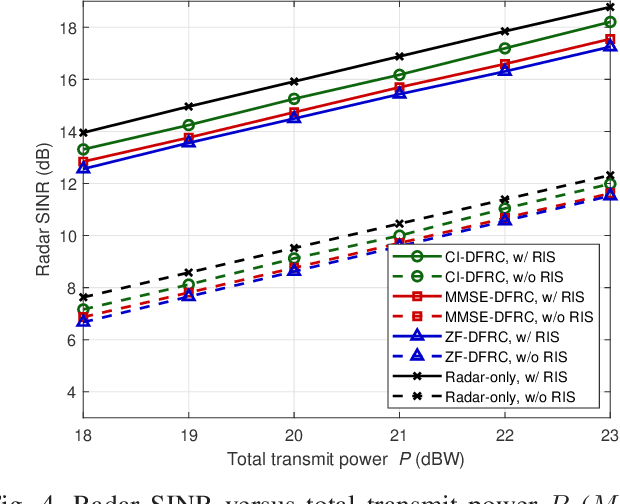
Abstract:Reconfigurable intelligent surface (RIS) is a promising technology for 6G networks owing to its superior ability to enhance the capacity and coverage of wireless communications by smartly creating a favorable propagation environment. In this paper, we investigate the potential of employing RIS in dual-functional radar-communication (DFRC) systems for improving both radar sensing and communication functionalities. In particular, we consider a RIS-assisted DFRC system in which the multi-antenna base station (BS) simultaneously performs both multi-input multi-output (MIMO) radar sensing and multi-user multi-input single-output (MU-MISO) communications using the same hardware platform. We aim to jointly design the dual-functional transmit waveform and the passive beamforming of RIS to maximize the radar output signal-to-interference-plus-noise ratio (SINR) achieved by space-time adaptive processing (STAP), while satisfying the communication quality-of-service (QoS) requirement under one of three metrics, the constant-modulus constraint on the transmit waveform, and the restrict of RIS reflecting coefficients. An efficient algorithm framework based on the alternative direction method of multipliers (ADMM) and majorization-minimization (MM) methods is developed to solve the complicated non-convex optimization problem. Simulation results verify the advancement of the proposed RIS-assisted DRFC scheme and the effectiveness of the developed ADMM-MM-based joint transmit waveform and passive beamforming design algorithm.
Latte-Mix: Measuring Sentence Semantic Similarity with Latent Categorical Mixtures
Oct 21, 2020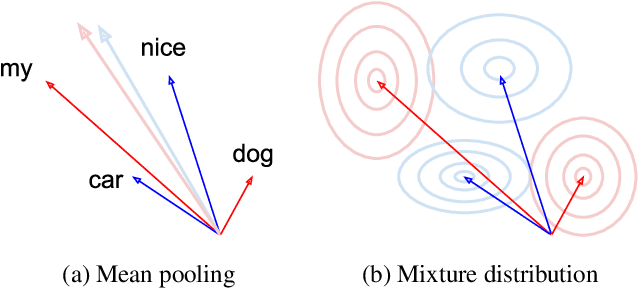
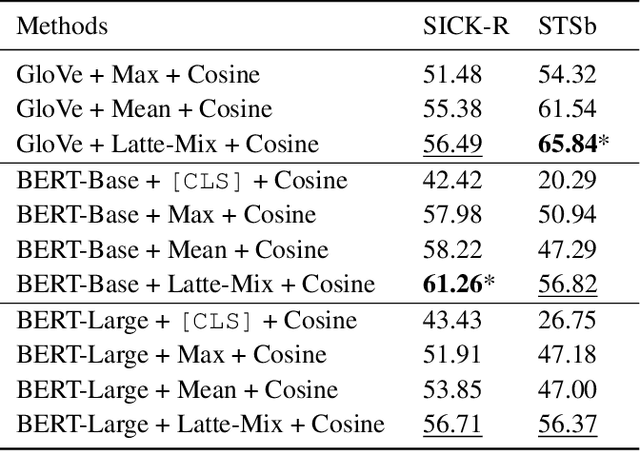
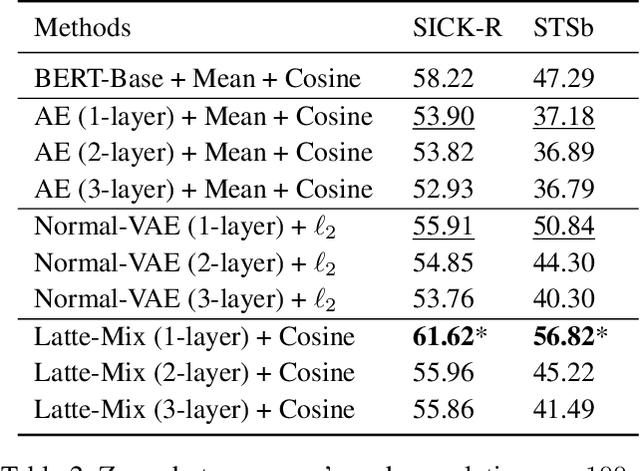
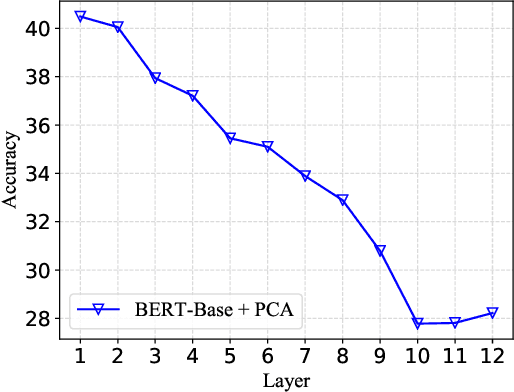
Abstract:Measuring sentence semantic similarity using pre-trained language models such as BERT generally yields unsatisfactory zero-shot performance, and one main reason is ineffective token aggregation methods such as mean pooling. In this paper, we demonstrate under a Bayesian framework that distance between primitive statistics such as the mean of word embeddings are fundamentally flawed for capturing sentence-level semantic similarity. To remedy this issue, we propose to learn a categorical variational autoencoder (VAE) based on off-the-shelf pre-trained language models. We theoretically prove that measuring the distance between the latent categorical mixtures, namely Latte-Mix, can better reflect the true sentence semantic similarity. In addition, our Bayesian framework provides explanations for why models finetuned on labelled sentence pairs have better zero-shot performance. We also empirically demonstrate that these finetuned models could be further improved by Latte-Mix. Our method not only yields the state-of-the-art zero-shot performance on semantic similarity datasets such as STS, but also enjoy the benefits of fast training and having small memory footprints.
Computational tool to study high dimensional dynamic in NMM
Sep 25, 2020



Abstract:Neuroscience has shown great progress in recent years. Several of the theoretical bases have arisen from the examination of dynamic systems, using Neural Mass Models (NMMs). Due to the largescale brain dynamics of NMMs and the difficulty of studying nonlinear systems, the local linearization approach to discretize the state equation was used via an algebraic formulation, as it intervenes favorably in the speed and efficiency of numerical integration. To study the spacetime organization of the brain and generate more complex dynamics, three structural levels (cortical unit, population and system) were defined and assumed, in which the new assumed representation for conduction delays and new ways of connecting were defined. This is a new time-delay NMM, which can simulate several types of EEG activities since kinetics information was considered at three levels of complexity. Results obtained in this analysis provide additional theoretical foundations and indicate specific characteristics for understanding neurodynamic.
 Add to Chrome
Add to Chrome Add to Firefox
Add to Firefox Add to Edge
Add to Edge